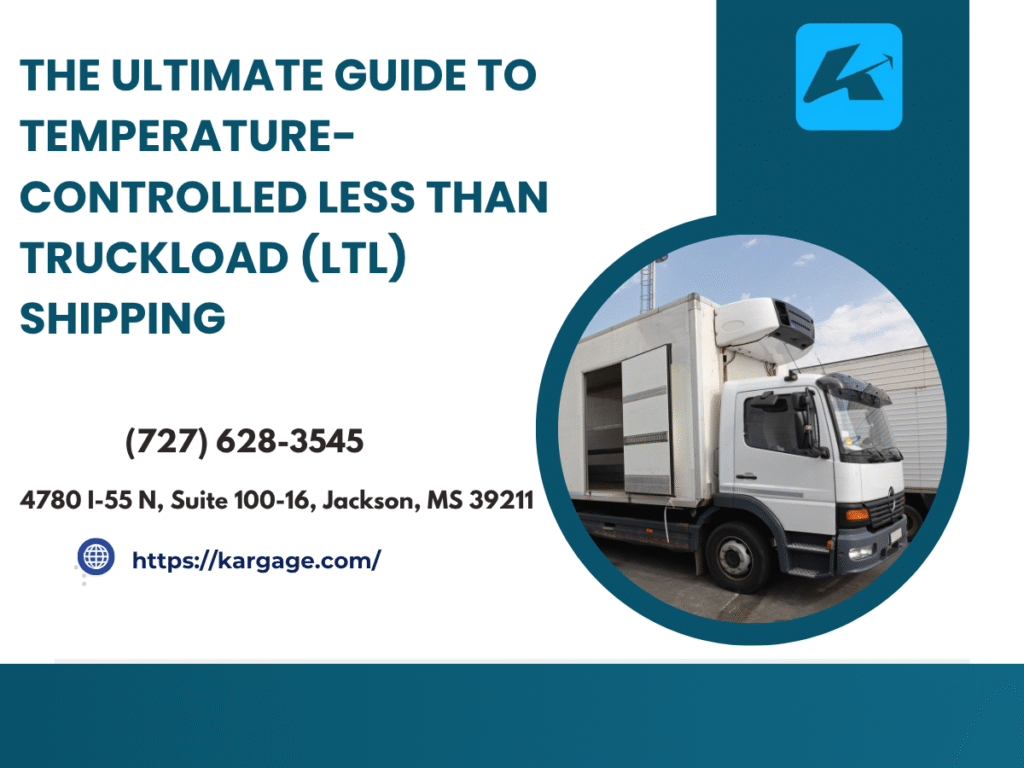Shipping temperature-sensitive goods—like fresh produce, pharmaceuticals, or frozen desserts—via Less Than Truckload (LTL) is like walking a tightrope. Your cargo shares space with other shipments, making precise temperature control a must to prevent spoilage or compliance issues.
Whether you’re a small business or a large distributor, mastering temperature-controlled LTL shipping is critical to delivering quality.

This ultimate guide offers five essential strategies to ensure your refrigerated freight arrives safely and on time.
1. Select a Specialized LTL Carrier
Temperature-controlled LTL shipping requires carriers with the right expertise and equipment. Not every LTL provider has refrigerated trailers (reefers) capable of maintaining strict temperatures, like 0°F for frozen goods or 36°F for fresh flowers.
Look for carriers with a proven track record in handling your cargo type. Ask about their reefer technology—do they use dual-zone trailers for mixed loads or backup power for emergencies? Verify their ability to provide temperature logs for compliance.
Kargage, based in Jackson, Mississippi, connects shippers with vetted carriers skilled in refrigerated LTL shipping.
Pro Tip: Request the carrier’s maintenance records for reefer units and their experience with your specific cargo, like biologics or dairy.
2. Optimize Packaging for Temperature Stability
In LTL shipping, your freight faces multiple stops, handling, and potential temperature fluctuations. Robust packaging is your cargo’s shield.
Use insulated boxes or pallets with thermal liners for pharmaceuticals or perishables. Add gel packs, dry ice, or phase-change materials to maintain temperatures during transit. For frozen goods, double-wrap pallets with insulated film to block heat. Ensure packages are durable to withstand stacking without crushing.
Clear labels—like “Keep Refrigerated” or “Frozen: Do Not Thaw”—guide handlers to store your cargo correctly.
Action Step: Test your packaging under simulated transit conditions to confirm it holds the required temperature for the entire journey.
3. Implement Robust Temperature Monitoring
A single temperature spike can ruin a shipment of vaccines or fresh seafood. Continuous monitoring is non-negotiable in temperature-controlled LTL shipping, where multiple terminal stops increase risks.
Equip your cargo with data loggers or IoT sensors that track temperature, humidity, and even door openings in real time. These devices send alerts if conditions stray, allowing quick intervention. Ensure carriers provide detailed temperature reports for regulatory audits or claims.
Advanced monitoring builds trust with customers and regulators alike.
Quick Tip: Choose carriers with integrated sensor technology. Ask for sample temperature logs to verify their tracking accuracy.
4. Streamline Transit and Terminal Handling
LTL shipments often involve consolidation at terminals, where cargo is sorted and reloaded, extending transit time and exposing goods to temperature risks. Poorly managed terminals can leave reefer freight in non-climate-controlled areas, jeopardizing quality.
Select carriers with climate-controlled terminals and efficient routing to minimize stops. For time-sensitive cargo, like fresh berries, prioritize direct routes or expedited LTL services. Communicate delivery deadlines clearly to ensure priority handling.
Kargage helps shippers optimize LTL routes, keeping temperature-sensitive freight on schedule.
Best Practice: Include a transit time buffer in your schedule. Confirm the carrier’s terminal facilities are refrigerated to protect your cargo.
5. Navigate Regulations and Secure Insurance
Temperature-controlled LTL shipping is governed by strict regulations, such as the FDA’s Food Safety Modernization Act (FSMA) for food or USP <1079> standards for pharmaceuticals. Violations can lead to fines, rejected shipments, or legal trouble.
Understand the rules for your cargo—FSMA, for example, mandates verifiable temperature records for perishables. Protect your investment with cargo insurance, as carrier liability often excludes spoilage from temperature issues unless negligence is proven.

Work with carriers or brokers familiar with these standards to stay compliant.
How to Start: Review relevant regulations (FDA, USP) for your goods. Discuss insurance options with your broker to cover temperature-related risks.
Putting It All Together
Temperature-controlled LTL shipping is a complex puzzle, but with the right strategies, you can deliver your cargo in perfect condition. By selecting specialized carriers, optimizing packaging, monitoring temperatures, streamlining transit, and navigating regulations, you’ll master this critical process.
These steps go beyond preventing losses—they ensure customer satisfaction and compliance. At Kargage, we’ve seen how meticulous planning keeps refrigerated LTL shipments seamless for our clients. But this isn’t about us—it’s about you.
Ready to ship your temperature-sensitive freight? Call us at (727) 628-3545 for a quote. With this guide, you’re equipped to conquer LTL shipping like a pro.

